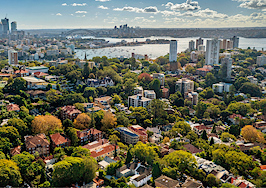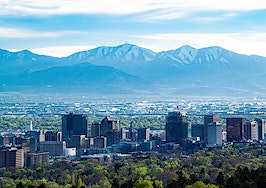Join industry visionaries Pete Flint, Spencer Rascoff, Ryan Serhant and more at Inman Connect New York, Jan. 24-26. Punch your ticket to the future by joining the smartest people in real estate at this must-attend event. Register here.
The number of overpriced housing markets has more than quadrupled in the last year, as the one-two punch of rising mortgage rates and home prices has pushed “real” home prices up by more than 50 percent over that time.
That’s according to the latest First American Real House Price Index (RHPI), which measures price changes of single-family properties after adjusting for the impact of changes in household income and interest rate changes.
At this time a year ago, First American’s index suggested homes were overvalued in just four of the 50 biggest U.S. markets, all in California: San Jose, San Francisco, Los Angeles and San Diego.
But with increases in home prices and mortgage rates since then, median sale prices exceed the house-buying power of would-be buyers in 19 of 50 markets, First American Financial Corp. announced Tuesday.

Mark Fleming
“For home buyers, there are few options to mitigate the loss of affordability caused by a higher mortgage rate and rising prices,” said First American Chief Economist Mark Fleming, in a statement.
Rising household income has increased house-buying power some, but not by enough to offset all of the impact of higher mortgage rates and home prices on affordability, Fleming said.
Six of the eight most overvalued markets identified by the index are in California. Two other states also had more than one overvalued market — Florida (Miami and Tampa) and Texas (Austin and San Antonio).
Most overvalued markets
- San Jose
- San Francisco
- Los Angeles
- San Diego
- Seattle
- Austin
- Riverside
- Sacramento
- New York
- Las Vegas
- Phoenix
- Denver
- Portland, Oregon
- Nashville
- Charlotte, North Carolina
- San Antonio
- Miami
- Tampa
- Salt Lake City
At $770,000, median house-buying power in San Jose in July was barely more than half of the median sale price of a home at $1.46 million, Fleming noted in a blog post. That’s helping cool annual home price appreciation in the San Jose market, which First American calculates peaked at 19.4 percent in February before slowing to 4.6 percent in July.
“As affordability wanes, would-be buyers are pulling back from the market, prompting annual house price appreciation to moderate,” Fleming said.
That conclusion is backed up by two other home-price indexes released Tuesday — S&P CoreLogic’s Case-Shiller report, and an index compiled by Fannie Mae and Freddie Mac’s regulator, the Federal Housing Finance Agency. Those indexes show national home prices peaking nationwide in June and then dropping on a seasonally adjusted basis in July.
Despite the squeeze on affordability in many markets, First American’s index suggests that house buying power still exceeds the median sale price in 31 markets. In Detroit, Philadelphia, and Pittsburgh, homes are considered undervalued by nearly $200,000.

“While the markets considered overvalued may need to adjust to the not-so-new reality of higher mortgage rates, housing market fundamentals still support a moderation of annualized house price appreciation rather than a sharp decline,” Fleming said.
Get Inman’s Extra Credit Newsletter delivered right to your inbox. A weekly roundup of all the biggest news in the world of mortgages and closings delivered every Wednesday. Click here to subscribe.













